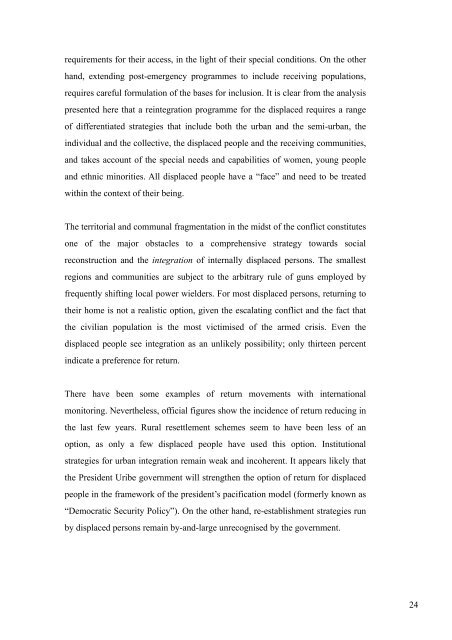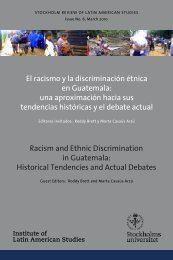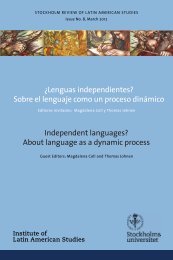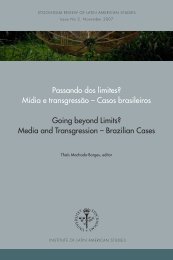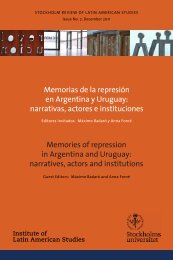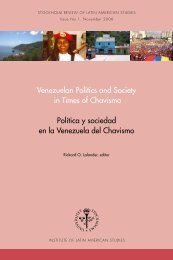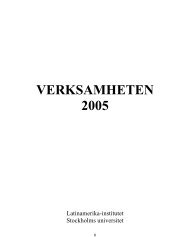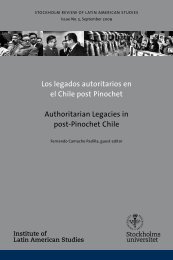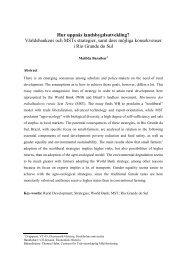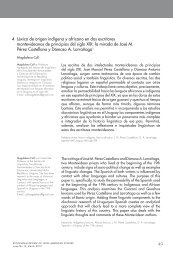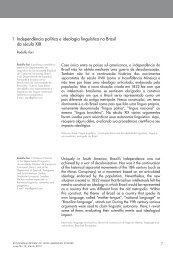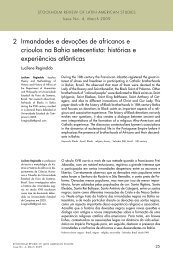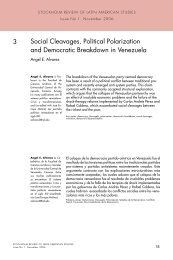Papers - Conference 2009 - Institute of Latin American Studies
Papers - Conference 2009 - Institute of Latin American Studies
Papers - Conference 2009 - Institute of Latin American Studies
You also want an ePaper? Increase the reach of your titles
YUMPU automatically turns print PDFs into web optimized ePapers that Google loves.
equirements for their access, in the light <strong>of</strong> their special conditions. On the otherhand, extending post-emergency programmes to include receiving populations,requires careful formulation <strong>of</strong> the bases for inclusion. It is clear from the analysispresented here that a reintegration programme for the displaced requires a range<strong>of</strong> differentiated strategies that include both the urban and the semi-urban, theindividual and the collective, the displaced people and the receiving communities,and takes account <strong>of</strong> the special needs and capabilities <strong>of</strong> women, young peopleand ethnic minorities. All displaced people have a “face” and need to be treatedwithin the context <strong>of</strong> their being.The territorial and communal fragmentation in the midst <strong>of</strong> the conflict constitutesone <strong>of</strong> the major obstacles to a comprehensive strategy towards socialreconstruction and the integration <strong>of</strong> internally displaced persons. The smallestregions and communities are subject to the arbitrary rule <strong>of</strong> guns employed byfrequently shifting local power wielders. For most displaced persons, returning totheir home is not a realistic option, given the escalating conflict and the fact thatthe civilian population is the most victimised <strong>of</strong> the armed crisis. Even thedisplaced people see integration as an unlikely possibility; only thirteen percentindicate a preference for return.There have been some examples <strong>of</strong> return movements with internationalmonitoring. Nevertheless, <strong>of</strong>ficial figures show the incidence <strong>of</strong> return reducing inthe last few years. Rural resettlement schemes seem to have been less <strong>of</strong> anoption, as only a few displaced people have used this option. Institutionalstrategies for urban integration remain weak and incoherent. It appears likely thatthe President Uribe government will strengthen the option <strong>of</strong> return for displacedpeople in the framework <strong>of</strong> the president’s pacification model (formerly known as“Democratic Security Policy”). On the other hand, re-establishment strategies runby displaced persons remain by-and-large unrecognised by the government.24


